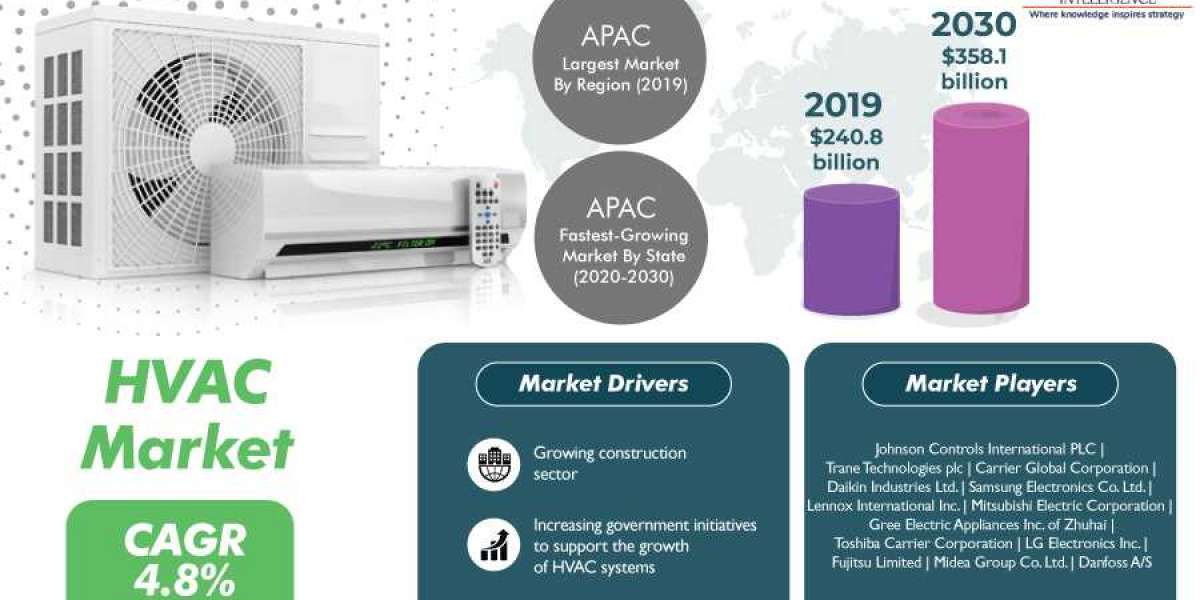Governments of many countries are undertaking initiatives to encourage the replacement of old heating, ventilation, and air conditioning (HVAC) systems with new, energy-efficient systems because unrepaired and worn-out equipment has huge repair and maintenance costs. For example, the Ministry of Power, India, launched an Energy Conservation Building Code for Residential Buildings (ECBC-R), named 'Eco-Niwas Samhita 2018', in December 2018.
The code applies to mixed-land-use buildings and residential buildings built on a land area of ≥500 square meters. It lays down the minimum performance standards for these buildings, to limit heat loss and gain. Further, the expanding construction industry will support the HVAC market in witnessing a CAGR of 4.8% during the forecast period (2020–2030). As a result, the market revenue is expected to rise from $240.8 billion in 2019 to $358.1 billion in 2030.
India, Qatar, China, the U.S., Saudi Arabia, and the U.A.E. are generating a high demand for HVAC systems due to the soaring number of hotels, shopping complexes, and skyscrapers in these countries. The construction of new structures is attributed to the booming number of tourists and upcoming events, such as FIFA World Cup 2022 and Dubai Expo 2020.
Get the Sample Copy of this Report at: https://www.psmarketresearch.com/market-analysis/hvac-market/report-sample
According to PS Intelligence, the industrial sector is a prominent user of HVAC appliances. For instance, the food and beverage sector requires adequate HVAC arrangement to maintain the hygiene and safety level of food and drinks. The manufacturing units of food and beverage companies are required to comply with the food safety standards laid down by government organizations, such as the Food and Drug Administration (FDA).
For instance, such a production unit requires accurately designed air handling systems to control odors and airborne particles. Geographically, the Asia-Pacific (APAC) region dominated the HVAC market during the historical period, and it is expected to demonstrate the fastest growth in the forecast years. This can be attributed to the vast urban population, economic prosperity, and local production of HVAC systems in the region. According to the World Bank, in 2019, the urban population of India accounted for nearly 34.4% of the total population of the country.
Moreover, the soaring disposable income of the people in India and China is driving the demand for HVAC appliances in the region. Thus, the increasing government initiatives and flourishing construction industry will boost the adoption of HVAC systems in the foreseeable future.








